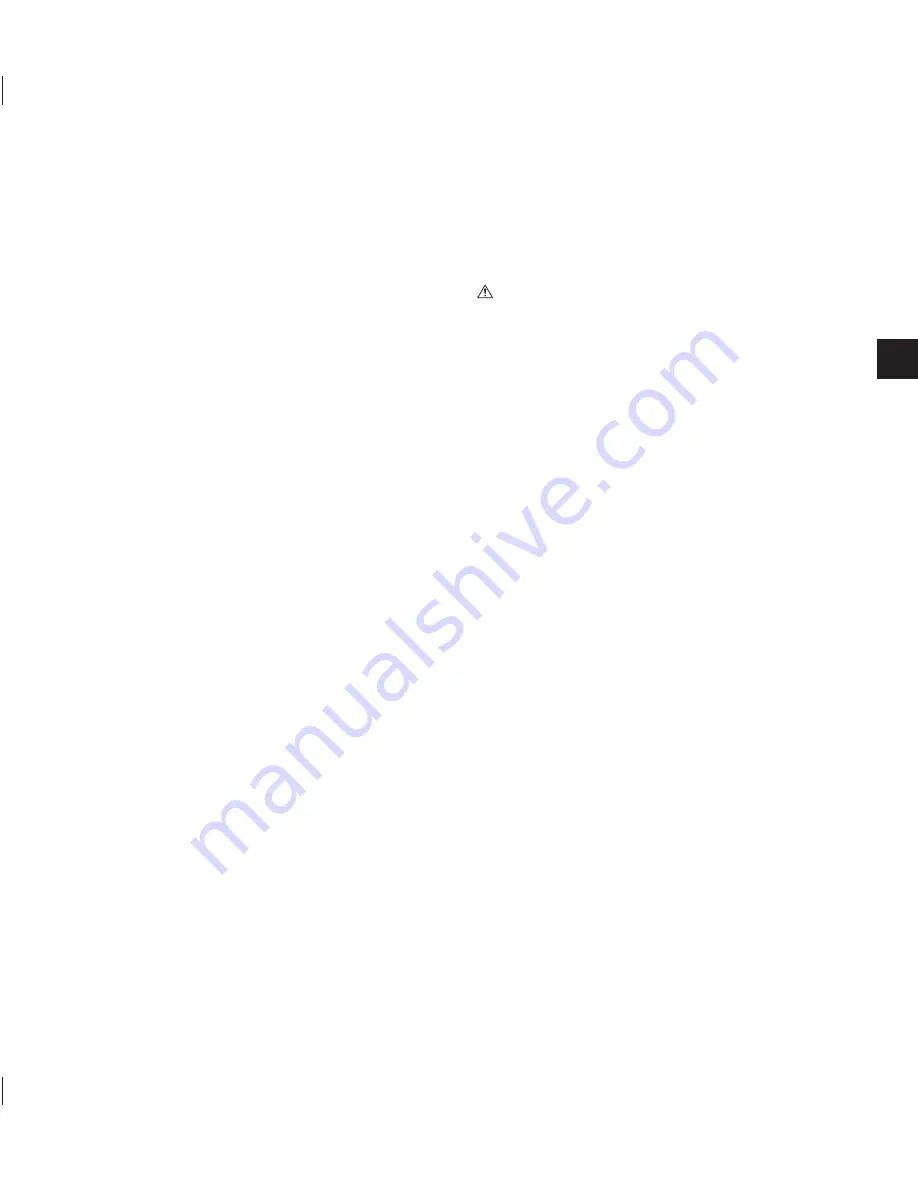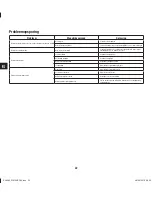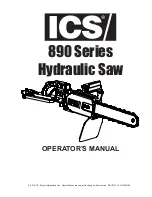
GB
11
Product Familiarisation
1. Blade Change Height Lock
2. Plunge Release
3. On/Off Trigger Switch
4. Main Handle
5. Spindle Lock
6. Speed Dial
7. Rear Bevel Angle Lock
8. Adjustment Cam
9. Adjustment Cam Bolt
10. 0° Micro Adjuster
11. Motor Cover Screw
12. 0° Micro Adjuster
13. Angle Indicator Bolt
14. Clamping Recess
15. Angle Indicator
16. Bevel Angle Scale
17. Main Bevel Angle Lock
18. Plunge Depth Lock
19. Front Handle
20. Dust Extraction Port
21. Line Indicator
22. Plunge Depth Scale
23. Depth Indicator
24. Motor Vents
25. Plunge Channel
26. Plunge Release Lever
27. Blade Bolt
28. Blade Flange
29. Direction Indicator
30. 45° Micro Adjuster
31. Blade Direction Indicator
32. Blade
33. Blade Teeth
34. Track (x 2)
35. Clamps (x 2)
36. Track Connector
37. Blade Key
38. Track Key
Intended Use
Track-compatible plunge circular saw. Improved design allows safer and cleaner plunge pocket/internal cuts.
Light to medium duty rip and cross cuts can be performed on soft, hard and composite woods either with or
without track. Also suitable for plastics using the supplied saw blade. Suitable for other materials (excluding
ferrous metals) with different saw ,blades (not supplied). Any other uses can be considered improper use.
Not for commercial use.
Unpacking Your Tool
• Carefully unpack and inspect your tool. Familiarise yourself with all its features and functions
• Ensure that all parts of the tool are present and in good condition
• If any parts are missing or damaged, have such parts replaced before attempting to use this tool
Before Use
WARNING
: Always disconnect from the power supply before carrying out any assembly, maintenance
or cleaning.
Dust extraction
• For a cleaner, safer work environment, and to protect the tool from dust and over-heating, connect a dust
extraction system or workshop vacuum cleaner to the Dust Extraction Port (20) and ensure the Motor Vents
(24) are kept free of wood chippings and dust. Regularly clean the area of the tool with a vacuum where a
dust extraction system cannot be fitted or used
Replacing the saw blade
Note
: The blade is pre-fitted; make sure the Blade Bolt (27) is securely tightened before first use.
• Only use blades that are compatible. Check the diameter, bore and thickness and the no load speed of the
saw in the specification. The maximum speed of the blade must match or exceed the no load speed of the
tool
• Never fit high speed steel blades or abrasive discs. Fitting of other purpose or different-sized blades will
void the warranty
• Do not fit inferior blades. Regularly check the blade is flat, sharp and free of cracks or defects
1. Place the saw on a surface that allows the saw blade to extend below the base
2. Press the Plunge Release (2) and plunge the saw so the Blade Bolt (27) is viewable. Move the Blade
Change Height Lock (1) to the back position to lock the plunge depth height
3. Fit the Blade Key (37) to the Blade Bolt and depress the Spindle Lock (5)
4. Turn the Blade Key in the direction of blade rotation (anti-clockwise) as shown by the Direction Indicator
(29) to undo the Blade Bolt and then remove the Blade Bolt and Blade Flange (28)
5. Carefully lift the worn blade off the inner washer on the shaft and slide the blade out through the aperture
at the bottom of the blade housing and set aside
6. Carefully slide the new blade in through the bottom of the blade housing and position it onto the inner
washer on the shaft. The printed face of the blade should face out and the Blade Direction Indicator (31)
should point in the same direction as the Direction Indicator (29)
7. Refit the Blade Flange then lightly screw the Blade Bolt through the outer blade flange
8. Check that the blade is seated properly, depress the Spindle Lock and tighten the Blade Bolt firmly with the
Blade Key
9. Move the Blade Change Height Lock to its original position and allow the saw plunge height to return to its
normal position with the blade fully inside the main housing
Assembling the track
1. Fit or reposition the Track Connector (36) by loosening the 2 right grub screws using the supplied Track Key
(38) so it is locked in a halfway position (Image A) on 1 piece of the Track (34)
2. Slide the other piece of Track (34) onto the Track Connector and tighten the other 2 grub screws (Image B)
Note
: Check the Track is joined correctly and there are no sharp edges or burrs on either side of the Track
especially on the raised edge that the saw base runs along (Image C arrowed).
Note
: You only need to assemble both parts of Track if you need the full length. The track saw can be used
with just one piece of Track for shorter cuts.
336282_Z1MANPRO1.indd 11
09/09/2016 09:54












































